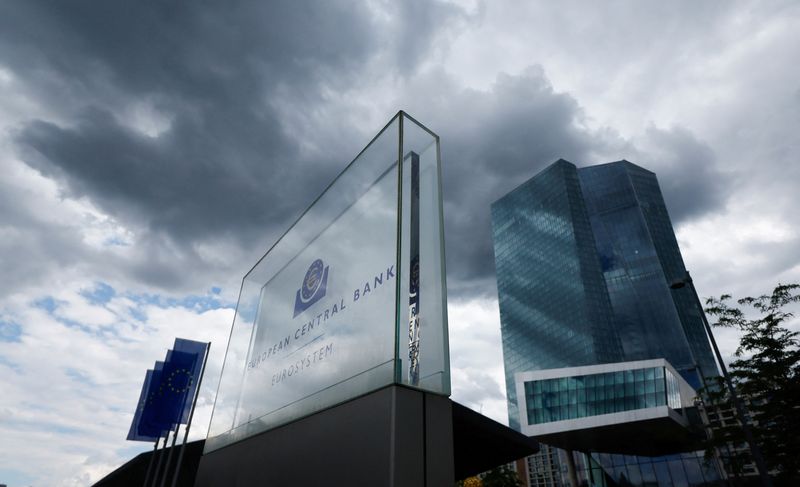Euro zone inflation dips below 2%, strengthening rate cut case
2024.10.01 05:29
By Balazs Koranyi
FRANKFURT (Reuters) – Euro zone inflation dipped below 2% for the first time since mid-2021 in September, reinforcing an already solid case for a European Central Bank rate cut this month as a three-year battle to tame runaway price growth nears its end.
Inflation in the 20 countries sharing the euro currency eased to 1.8% in September from 2.2% in August, Eurostat data showed on Tuesday, coming below expectations for 1.9% in a Reuters poll, primarily on falling energy costs and muted goods prices.
A more closely watched figure on underlying prices referred to as core inflation, meanwhile, dipped to 2.7% from 2.8% on slower services price growth, coming below expectations for 2.8%.
Price growth has been above the central bank’s target for years now with surging energy costs, production bottlenecks in the post pandemic reopening, corporate opportunism and copious fiscal support all lifting inflation to over 10% by late 2022.
But a record string of interest rate hikes from the central bank has tamed price growth relatively quickly, and policymakers are now debating just how fast they should ease borrowing costs.
The ECB has already reduced rates in June and September, and ECB President Christine Lagarde sent the clearest signal yet on Monday that another cut may come later this month given sanguine price trends.
Such a quick follow-up rate cut was not expected until recently but a dismal string of growth data, moderating wage pressures and inflation readings below the ECB’s own projections have all added to the urgency.
Bolstering the case for a cut, services inflation – perhaps the most closely watched component of price growth – slowed a touch to 4.0% from 4.1%, easing but not completely erasing fears that domestic price pressures are stuck at a high level.
Rapid wage growth has driven services costs for years but economists have long predicted a slowdown given softening labour markets, weak growth and smaller pay increases.
Falling energy costs remained the biggest contributor to disinflation, while non-energy industrial goods prices rose just 0.4% compared with a year earlier, also pulling the overall number down.
Lagarde has already said that inflation is now under the baseline predicted by the ECB, a signal that challenges the bank’s own narrative of durable price pressures and a return to the 2% target only at the end of 2025.
Investors raised their bets on quicker cuts on Lagarde’s comments and markets now price an 85% chance of a rate cut on Oct. 17, up from 25% at the start of last week.
They also price just over 50 basis points of moves until the end of the year, meaning back-to-back cuts are now fully priced in.

This has prompted a whole range of bank economists to change their predictions, with most big banks now betting on cuts in both October and December, and possibly January, too.
The ECB has predicted a rise in price growth to just above 2.5% around the turn of the year, but sharply lower oil prices point to downside risks to this scenario and investors now see a substantial risk that the ECB undershoots its target.








